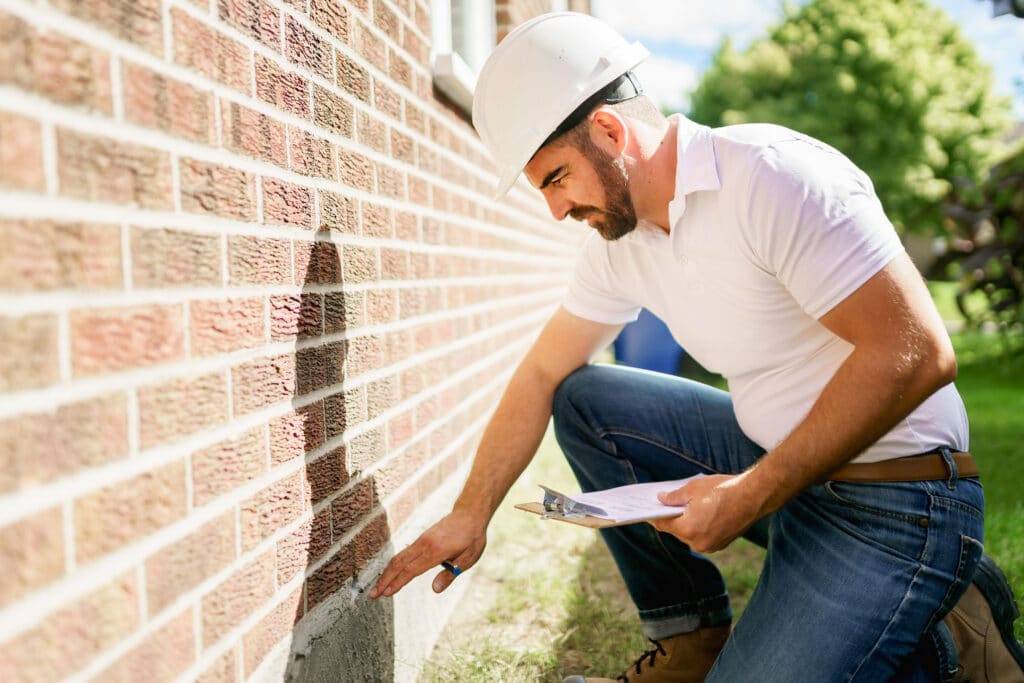Common Causes of Foundation Problems in Newport News
Foundation issues have multiple possible causes. Here are the most prevalent ones for Newport News residents:
- Standing water: Pooling water around your home can harm your foundation's integrity, especially when it collects in areas your gutters don't cover.
- Soil composition: Soil with large sand or clay concentrations is highly expansive. In the heavy rainfall Newport News experiences, the soil soaks up moisture like a sponge, then releases it in dry seasons. The constant expansion and contraction stresses nearby foundations, even if the foundations stay dry.
- Aging plumbing: The average Newport News home construction year is 1980. If you live in an older home, it's likely to have cast-iron plumbing. When the pipes start eroding, leaking water could reach your foundation and even pool beneath it.
- Tree Roots: Tree roots can intrude into a home's foundation through crevices, and may apply force that leads to your foundation fracturing, pipes rupturing, and overall structural destabilization.
How to Choose the Best Foundation Repair Company
When choosing a foundation contractor, you should consider your personal priorities. Ask each contractor on your list about the following qualities.
Licensing and Experience
The Virginia Department of Professional and Occupational Regulation issues licenses to foundation repair companies. The license a company has determines what work it can do and what size projects it can handle. To further understand your contractor's experience, we recommend asking questions about how its team will draft plans and pull permits, how the company inspects foundations, and what local codes apply to your project.
One of the best ways to evaluate a company's reputation is to go to its website. Look for the company's years in business and what credentials its team holds. Many top companies provide educational content for prospective customers.
Customer Reviews
We suggest checking the company's Better Business Bureau (BBB) profile to determine whether it's accredited and has a good customer review score. You can see whether other homeowners have shared satisfaction or filed complaints. Pay special attention to what customers say about company warranties. Remember that complaints don't necessarily mean a contractor is incompetent. BBB reviews also show how companies address complaints. A proactive team that aims to achieve amicable outcomes is a good one. Avoid a contractor if you don't see effective communication about problems.
Foundation Repair Cost in Newport News
The price of foundation repair can range widely depending on the extent of the issues and what needs to be fixed. For minor foundation fracturing and settling issues, you may pay as little as $1,800. However, if there is significant damage, the average cost lands at about $3,000. More intricate projects requiring digging, helical piers, or major mudjacking could cost $6,900+. See below the average foundation repair costs for common issues.
| Common Foundation Repair Services | Average Cost |
|---|---|
| Crack Repair | $358 |
| Leak Repair | $2,889 |
| Stabilization | $5,014 |
| Underpinning | $1,371 |
| Waterproofing | $3,193 |
Ready to Get a Quote on Your Foundation Repair Project?
Please enter a valid 5-digit zip code!
Frequently Asked Questions About Foundation Repair in Newport News
How much does foundation repair cost in Newport News?
When do I need to waterproof my foundation?
- Mold and mildew
- Discoloration or odors
- Plumbing leaks
- Uneven floors
- Hairline cracks
- Flooding
Will my homeowners insurance cover foundation repair?
Are there telltale signs I should avoid a particular foundation company?
To share feedback or ask a question about this article, send a note to our Reviews Team at reviewsteam@thisoldhousereviews.com.
More Foundation Resources
National Foundation Repair Ranking Methodology
Sources
U.S. Census Bureau (American Communities Survey)
















